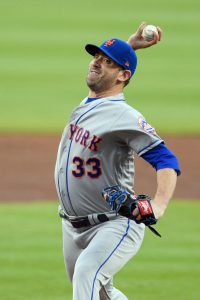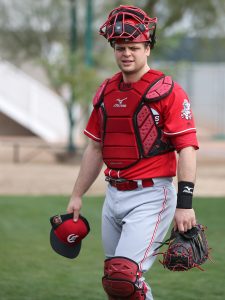The blockbuster seven-player trade between the Mets and Mariners is on the verge of being finalized, and an official announcement could come as early as Monday. Since the initial news about this trade first began to break last Thursday, however, there has already been quite a bit of discussion from various pundits about what this major swap means for both franchises. Here’s the round-up of some of the many takes on the trade, which reportedly consists of Robinson Cano, Edwin Diaz, and $20MM in cash considerations going to the Mets, while the Mariners receive Jay Bruce, Anthony Swarzak, former first-round draft picks Jarred Kelenic and Justin Dunn, and righty pitching prospect Gerson Bautista.
- As noted by both The Athletic’s Tim Britton and ESPN.com’s Buster Olney (subscriptions required for both), the Mets paid a hefty price to upgrade themselves at second base and closer during an offseason when several other options at both positions were available in free agency at a lower cost. Olney suggests that New York could’ve kept Jeff McNeil at second base and signed a closer like David Robertson or Jeurys Familia, which would’ve kept Kelenic/Dunn/Bautista in the farm system and left more money for the Mets to spend on other needs. “Given the particulars of the trade and the market context, the core question for the Mets in this deal is this: Do they think the quality difference in 70 innings of Diaz vs. 70 innings of a Robertson or Jeurys Familia is worth taking on $60MM of Cano money and swapping two of their top 10 prospects,” Olney asks. More than one rival evaluator mentioned to Olney that while Diaz is controllable for four years, Diaz’s large save totals will give him a costly arbitration price tag right away when he first becomes arb-eligible next winter.
- The Mets also could’ve given up less prospect depth, Britton observes, by taking on more of Cano’s salary. Regardless, the trade is hard to properly evaluate until we see how “the money saved in this move gets reinvested in the major league roster,” as Britton puts it.
- More moves are definitely necessary for the Mets, ESPN.com’s Keith Law opines (subscription required), since Cano and Diaz alone won’t turn New York into a contender. That’s even assuming Cano and Diaz continue to produce as they did in 2018, which is no guarantee given Cano’s age and the general year-to-year volatility of many relievers, even arms as dominant as Diaz was last season. “This had to be Mets fans’ worst nightmare: The owners, who seemingly can’t stop meddling in baseball operations, would hire someone as GM who’d short-circuit the ongoing rebuilding of the farm system in pursuit of short-term wins,” Law writes. He also gives his take on the three youngsters heading to Seattle, and believes the Mariners are doing a good job of adding talent to a minor league pipeline that was very short on premium prospects.
- Brodie Van Wagenen came into the Mets’ GM job intent on building a contender for 2019, and his pursuit of this goal has drawn praise from USA Today’s Bob Nightengale, who contrasts Van Wagenen’s plans with the now-common occurrence of a new general manager immediately beginning a rebuild upon taking a job. The Cano trade is “the kind of bold, daring move that used to dominate the baseball landscape, before GMs were more worried about preserving their job security than taking risks….Imagine, a team actually spending money, taking a genuine risk, and trying to win a World Series without worrying about hoarding prospects,” Nightengale writes. In regards to Cano’s ability to stay productive into his late 30’s and early 40’s, Nightengale adds the interesting observation that a DH role could still be in his future, should the National League adopt a designated hitter in the next collective bargaining agreement (the current CBA ends after the 2021 season).
- The Athletic’s Jim Bowden (subscription required) grades the deal as a B for the Mariners and a C for the Mets, noting that Seattle looks to be the long-term winner if Kelenic and Dunn develop into quality big league regulars.
- This deal, and the trades of James Paxton and Mike Zunino earlier this offseason, netted eight new minor leaguers for the Mariners, or $78MM in asset value to Seattle’s farm system, Fangraphs’ Eric Longenhagen calculates (based on the prospect valuation system used by Fangraphs’ Craig Edwards). The M’s previously ranked at the bottom of these prospect value rankings, though their moves have now moved them to around the middle of the pack, with Longenhagen’s caveat that this rating could certainly fluctuate based on what the Mariners or other teams do in the rest of the offseason.

